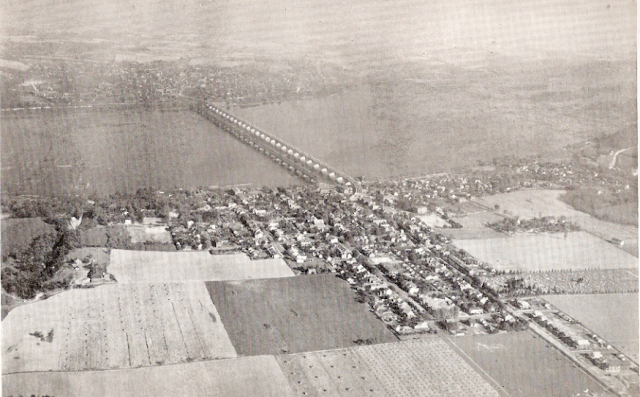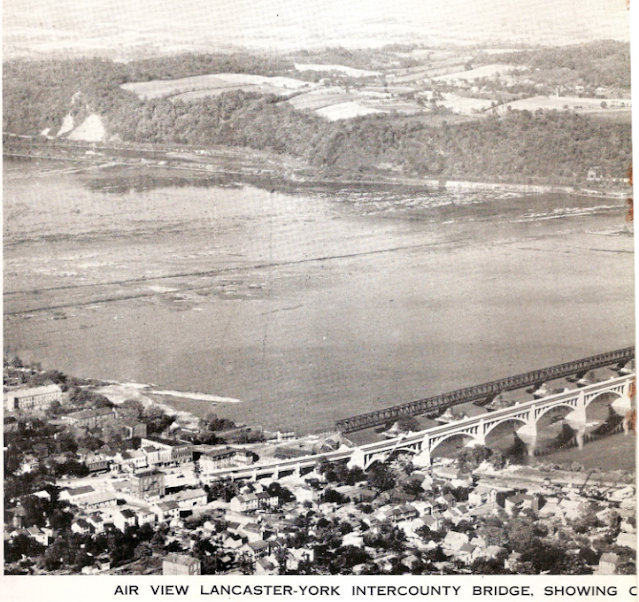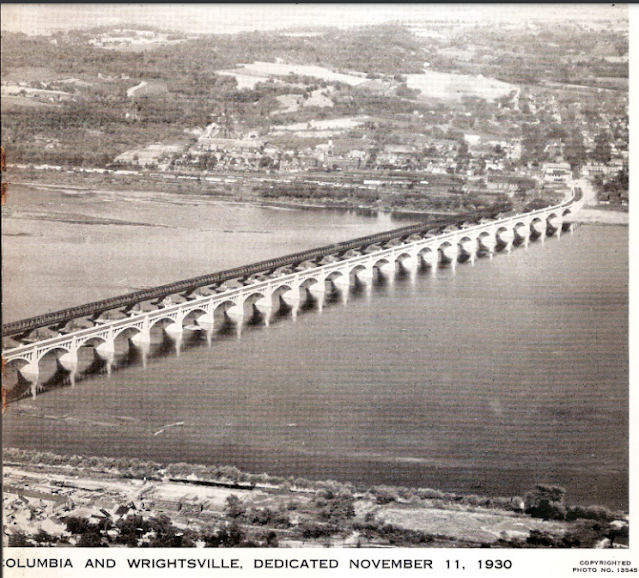Dam: (Satellite)
 |
| Leighton Hiller posted My uncle lived just south of this bridge crossing Lake DuBay between Knowlton & Dancy, WI. As a kid, I remember thinking the shared bridge was very cool. Also remember the signs warning not to drive on the bridge while a train was crossing. Found this page about it too. https://issuu.com/rj200/docs/dubayonline2010/s/11129533 John Strom: The other end (north end) had a curve leading onto it via car, my Dad Hated this bridge |
Today's bridge:
 |
| Street View, Aug 2022 |
 |
| Street View, Aug 2022 |
 |
| issuu The original truss was built in 1894, and later the roadway on cantilevered beams was attached. The highway, not just the bridge, was single lane! "Automobile drivers had to be extra wary because often, a wayward log slid off a rail car gondola and onto or in front of an unsuspecting car. This bridge was closed in 1979. The new highway bridge and reconstructed railroad bridge was completed in 1981." |
I find it hard to believe that the pin-connected bridge made it to 1979. In fact, this part of the Wisconsin River was flooded by the DuBay Dam. and, according to the topo map below, a separate road bridge was built by 1956. I could not find any info on the bridge that had to be built in the 1940s when the lake was created by the dam.
 |
| 1956 Stevens Point Quad @ 48,000 |
Topo maps label this railroad as Milwaukee. Wisconsin Central must have bought it when Milwaukee went bankrupt because issuu indicates WC was the owner. And because it is now owned by CN instead of CP.
 |
| issuu The bridge has a 7' (2.1m) clearance. |
DuBay Dam
 |
| Deidre Light, Apr 2022 |
The dam was built by an electric company in 1942 without a proper permit from the Federal government. [newspapers_lawsuit]
But now it does have a proper license, and the capacity is 7.2mw. The "head of water" is 25.5' (7.8m). [wmcpf]
The dike is 1.3 miles (2.1km) long. [newspapers_7000-acre_lake]
The structural height is 40' (12.2m), and the width of the spillway is 330' (100m) with 11 Tainter gates. The hydraulic height is 31' (9.4m). [uslakes]
What is "hydraulic height" vs. "head of water?" I would have thought they were the same, but the sources give different numbers.
 |
| Deidre Light, Apr 2022 |
 |
| Satellite |







%20The%20Empress_%20CPR%202816%20_%20Crossing%20the%20Soo%20Line%20Bridge%20over%20the%20Mississippi,%201.png)























.jpg)








